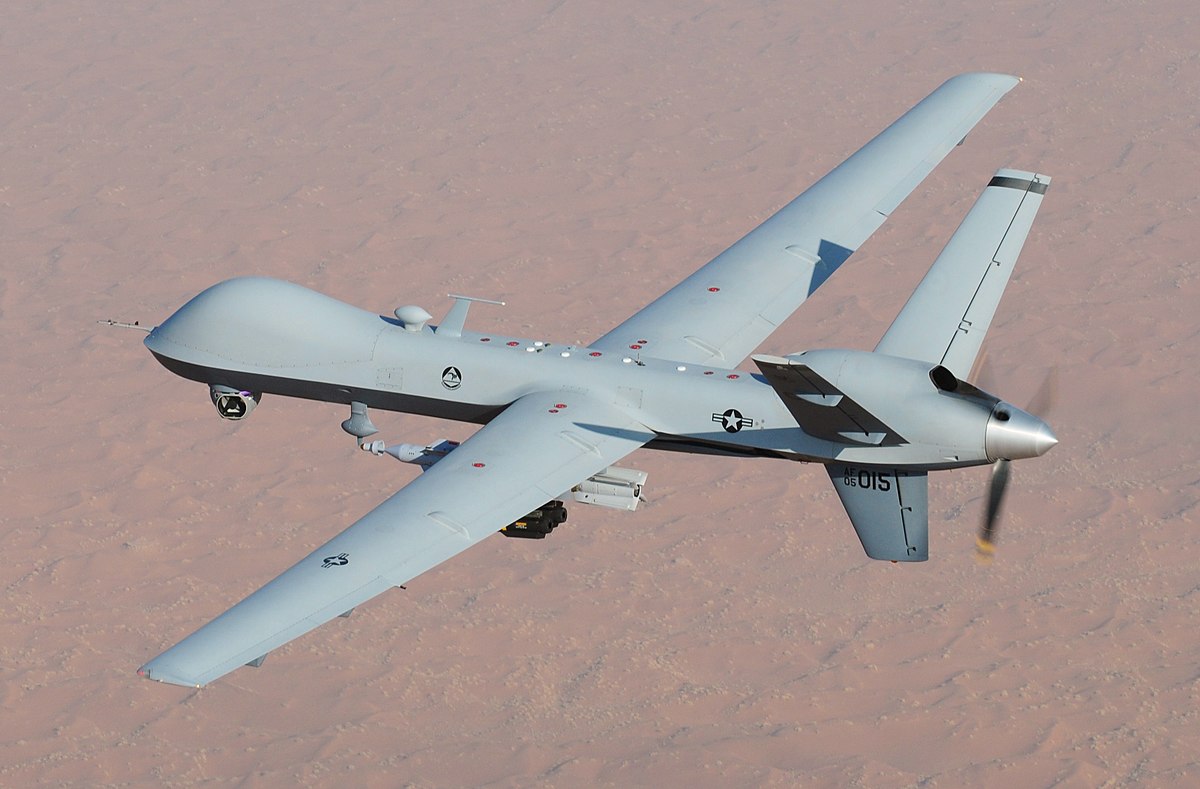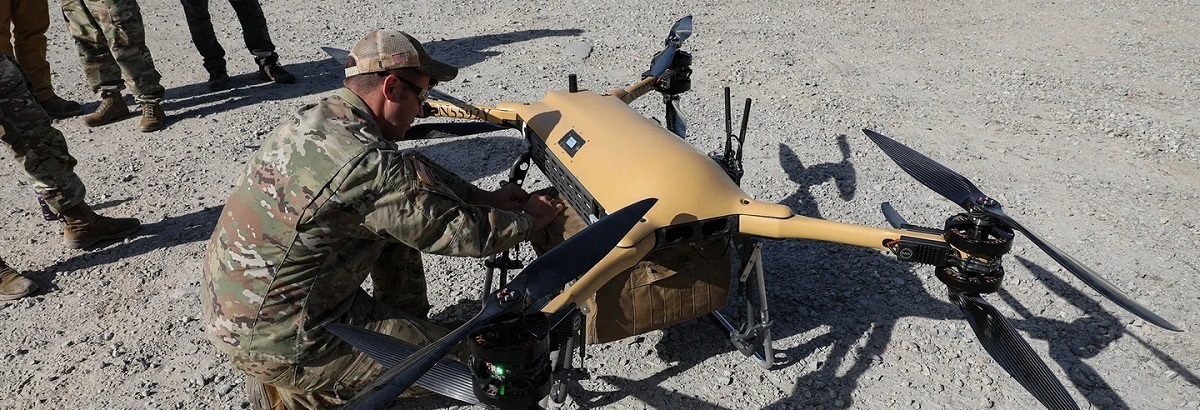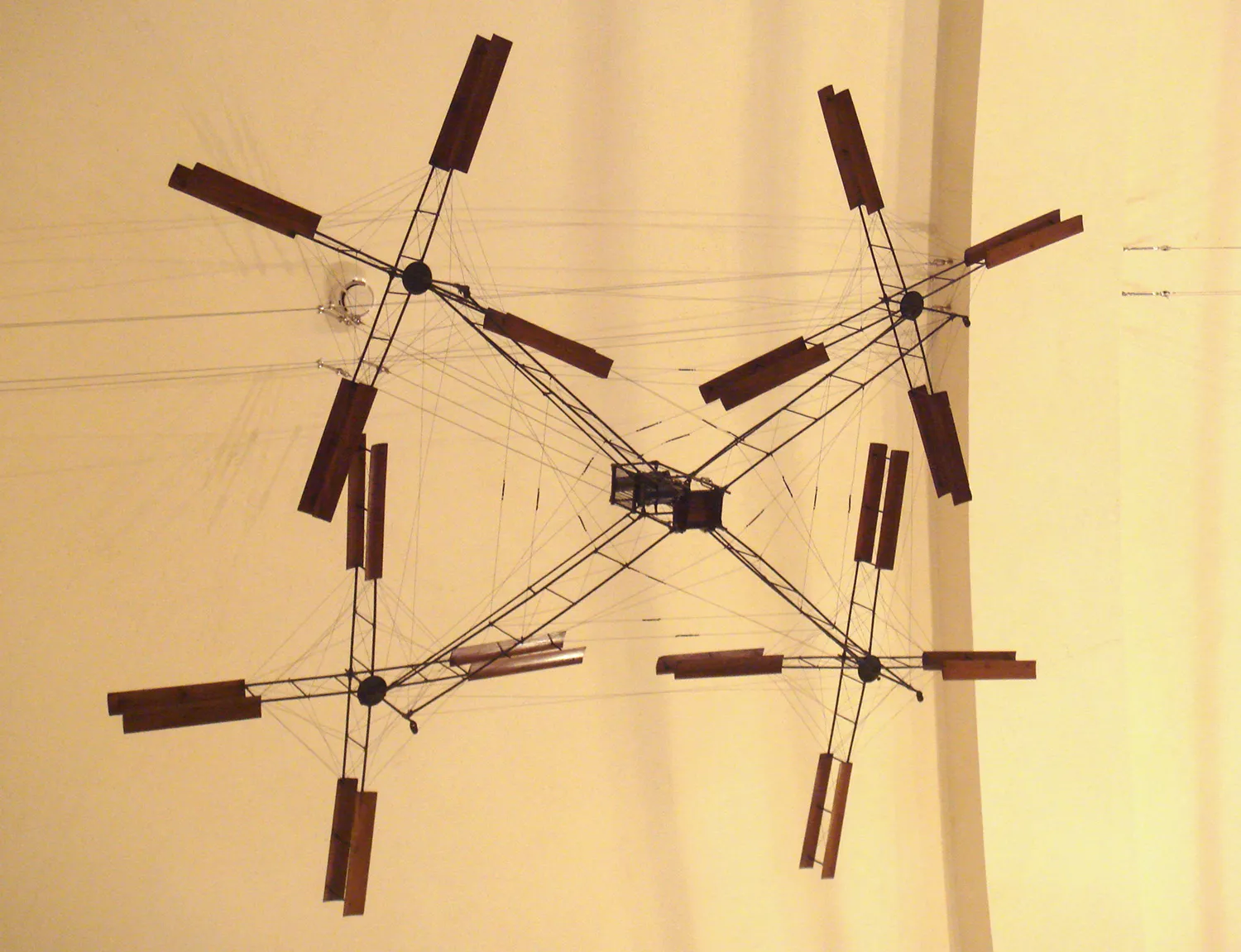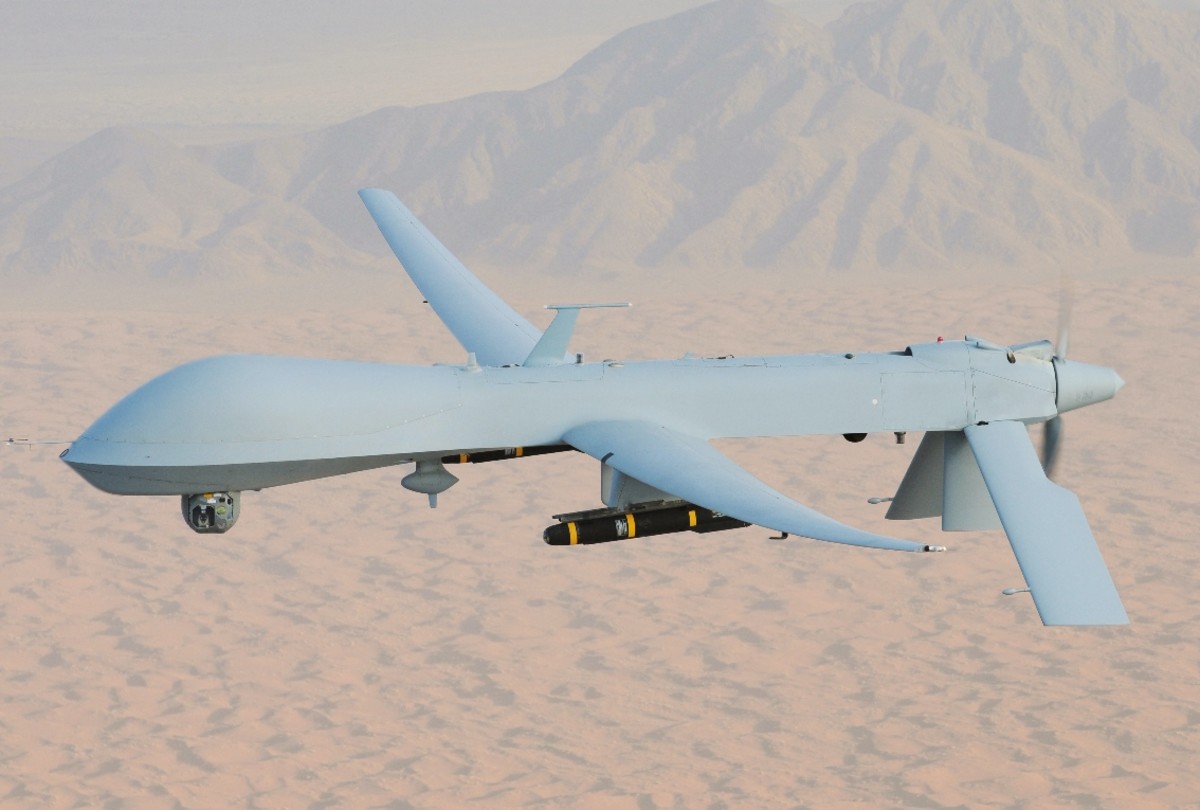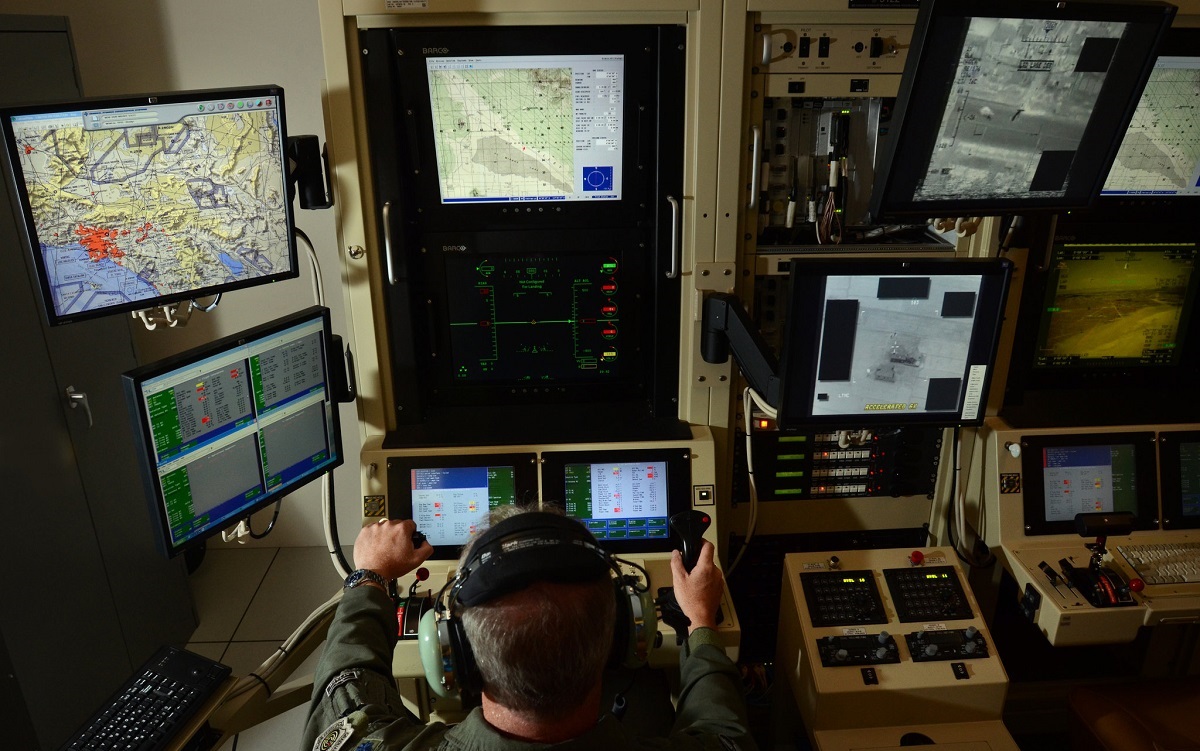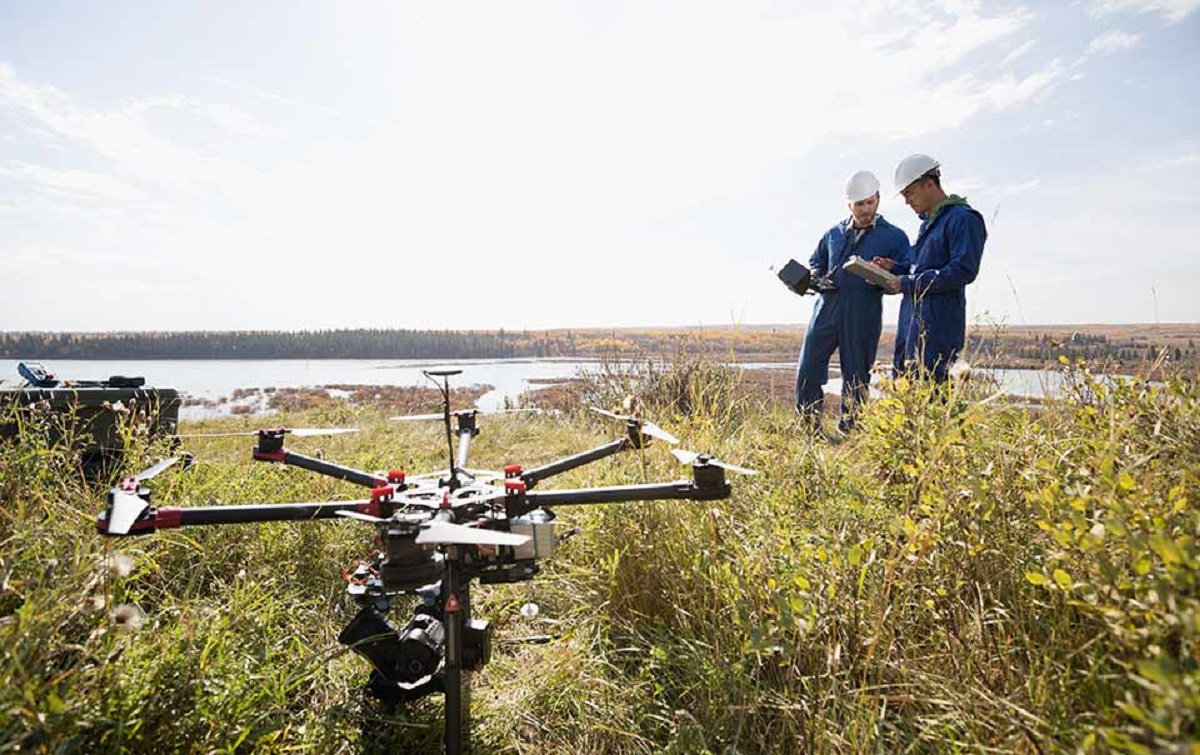Introduction
Welcome to the world of unmanned aerial vehicles (UAVs), where technological advancements have revolutionized military operations and surveillance capabilities. In this article, we will explore the size of the formidable and highly efficient Reaper drone, an iconic symbol of modern warfare.
Also known as the MQ-9 Reaper, this drone has gained significant attention due to its exceptional performance in both intelligence gathering and combat missions. Its advanced features and impressive capabilities make it one of the most formidable assets in the military arsenal.
The Reaper drone is operated remotely, eliminating the need for a pilot on board. Its sleek and menacing design, coupled with an array of sophisticated technology, allows it to carry out a wide range of missions with unparalleled precision.
This powerful aircraft has transformed the way military operations are conducted, providing real-time intelligence, surveillance, and reconnaissance in areas that would otherwise be challenging or dangerous for manned aircraft to access.
Throughout this article, we will delve into the history, design, size, and features of the Reaper drone. We will also discuss its payload capacity, range, endurance, speed, altitude, and its role in various missions.
So, buckle up for an informative and thrilling journey into the world of the Reaper drone, where cutting-edge technology meets tactical execution.
History of Reaper Drone
The development of the Reaper drone can be traced back to the early 2000s when the need for an advanced unmanned aerial vehicle (UAV) arose within the United States military. The success of its predecessor, the MQ-1 Predator, paved the way for the development of a more versatile and capable drone.
The Reaper drone, also known as the Predator B, was first introduced by General Atomics Aeronautical Systems in 2001. Its primary role was to provide intelligence, surveillance, and reconnaissance (ISR) in support of military operations. However, over time, it has evolved to take on additional combat capabilities.
One of the defining moments in the Reaper’s history came in 2006 when it conducted its first combat mission in Afghanistan. This marked a significant milestone in the integration of UAVs into military operations, as the Reaper demonstrated its ability to effectively gather vital intelligence and strike targets with precision.
Since then, the Reaper drone has been extensively deployed in various theaters of operation, including Iraq, Syria, and Yemen. Its success in combat missions has solidified its reputation as a formidable asset for the military, capable of neutralizing high-value targets and providing valuable situational awareness to ground forces.
Over the years, the Reaper drone has undergone several upgrades and enhancements to improve its performance and reliability. These improvements have included advancements in sensor technology, communication systems, and the integration of enhanced weapons capabilities.
With its proven track record and continuous development, the Reaper drone has established itself as a crucial asset in modern warfare. Its versatility, long endurance, and ability to operate in challenging environments make it an indispensable tool for military operations around the world.
As we delve further into the depths of the Reaper drone, we will explore its design and features, shedding light on the capabilities that have propelled it to the forefront of military technology.
Design and Features of Reaper Drone
The design of the Reaper drone embodies the perfect balance between aerodynamic efficiency and technological innovation. Its sleek, streamlined fuselage, combined with its robust construction, enables it to withstand harsh environmental conditions while maximizing its performance.
Measuring approximately 36 feet in length, with a wingspan of 66 feet, the Reaper drone has a distinctive appearance that sets it apart from other unmanned aerial vehicles. Its large wings provide exceptional lift and stability, allowing for extended periods of flight with minimal energy consumption.
Equipped with a powerful turboprop engine, the Reaper drone can reach a maximum speed of approximately 240 miles per hour. This enables it to cover large distances quickly, ensuring rapid response times and efficient mission execution.
One of the key features of the Reaper drone is its advanced sensor suite, which includes high-definition cameras, infrared and thermal imaging systems, and sophisticated radar technology. These sensors work in synergy to provide real-time situational awareness and intelligence gathering capabilities, allowing operators to identify and track targets with remarkable precision.
In terms of communication and control, the Reaper drone utilizes a secure satellite link that ensures seamless connectivity between the aircraft and ground control stations. This enables operators to remotely pilot the drone and receive real-time video feeds and sensor data for effective decision-making.
Moreover, the Reaper drone is equipped with a robust weapons system, capable of carrying a vast array of ordnance. This includes precision-guided missiles, bombs, and other munitions, allowing it to engage targets with the utmost accuracy and lethality when required.
Another notable feature of the Reaper drone is its long endurance. With an impressive endurance of up to 27 hours, it can loiter over specific areas, providing persistent surveillance and monitoring capabilities. This extended endurance greatly enhances its effectiveness in intelligence gathering and target acquisition.
As technology continues to advance, further innovations are being incorporated into the design of the Reaper drone. This ensures that it remains at the forefront of modern military operations, constantly adapting to the evolving challenges of the battlefield.
In the next section, we will explore the size and dimensions of the Reaper drone, giving us a better understanding of its physical characteristics.
Size and Dimensions of Reaper Drone
The Reaper drone impresses with its formidable size and dimensions, making it a dominant presence in the sky. With a length of around 36 feet and a wingspan of 66 feet, this unmanned aerial vehicle (UAV) is a significant and imposing aircraft.
When fully assembled, the Reaper stands at a height of approximately 10 feet, giving it a substantial and commanding presence. Its size allows for the integration of advanced equipment, sensors, and weapon systems, making it a highly versatile and capable platform.
The weight of the Reaper drone is another notable aspect of its dimensions. It has a maximum takeoff weight of around 4,900 pounds, allowing it to carry a considerable payload and operate in various mission scenarios.
Despite its size, the Reaper’s design incorporates features that optimize its aerodynamic performance. The sleek and streamlined fuselage, along with its long wingspan, enhances the drone’s stability and maneuverability during flight, enabling it to accomplish its missions with precision.
Transporting the Reaper drone requires careful planning and logistical coordination. Due to its large dimensions, the drone typically needs to be broken down into manageable sections for transportation purposes. This ensures that it can be efficiently moved from one location to another when necessary.
When fully assembled, the Reaper drone is a striking presence in the sky. Its size and dimensions provide it with the necessary physicality and payload capacity to undertake a wide range of missions and carry advanced sensor systems and weaponry.
As we continue to explore the capabilities of the Reaper drone, the next section will delve into its payload capacity, shedding light on the diverse range of equipment it can carry.
Comparison with Other Drones
When it comes to unmanned aerial vehicles (UAVs), the Reaper drone stands out as one of the most versatile and advanced aircraft in its class. However, it is important to compare it with other drones to understand its unique features and capabilities in relation to its contemporaries.
One notable comparison is between the Reaper and its predecessor, the MQ-1 Predator. While the Predator shares some similarities with the Reaper in terms of design and mission capabilities, the latter surpasses it in several aspects. The Reaper has a significantly larger size and payload capacity, enabling it to carry more advanced sensor systems and a wider array of munitions for combat missions.
Another drone often compared to the Reaper is the RQ-4 Global Hawk. While the Global Hawk is primarily used for long-range reconnaissance and surveillance missions, the Reaper’s versatility allows it to excel in both intelligence gathering and combat scenarios. The Reaper’s shorter wingspan and more compact size provide it with a greater level of agility and the ability to operate in more confined areas.
When comparing the Reaper drone to other drones on the market, it becomes apparent that its combination of endurance, payload capacity, and advanced sensor capabilities places it in a league of its own. Other drones may excel in specific areas, but the Reaper’s balance of size, maneuverability, and mission versatility make it a force to be reckoned with.
It is worth noting that as technology continues to advance, newer and more capable drones are being developed. However, the Reaper drone, with its proven track record and continuous upgrades, remains at the forefront of military drone technology, setting the standard for performance and reliability.
In the next section, we will explore the payload capacity of the Reaper drone, highlighting the impressive range of equipment it can carry during its missions.
Payload Capacity of Reaper Drone
One of the defining features of the Reaper drone is its impressive payload capacity. This capability allows the drone to carry a vast array of equipment, sensors, and weaponry, making it a versatile and potent platform for various military missions.
The Reaper drone has an external payload capacity of approximately 3,000 pounds, providing ample space for the integration of different mission-specific equipment. This payload capacity enables the drone to carry a combination of sensors, cameras, communication systems, and advanced weaponry, depending on the mission requirements.
One of the primary payloads that the Reaper drone carries is its sensor suite. Equipped with high-definition cameras, infrared and thermal imaging systems, and sophisticated radar technology, the drone can gather real-time intelligence and surveillance data with exceptional clarity and accuracy.
Additionally, the Reaper drone has the capability to carry various munitions, including precision-guided missiles, bombs, and other ordnance. This weapons payload provides the drone with a lethal and responsive firepower, allowing it to strike targets accurately and effectively engage in combat operations when required.
The payload capacity of the Reaper drone also extends to specialized equipment. The drone can be equipped with electronic warfare systems, signals intelligence equipment, and even maritime patrol systems, expanding its range of missions beyond traditional intelligence gathering and combat roles.
Furthermore, the Reaper drone can be fitted with external fuel tanks to extend its endurance and range, ensuring longer missions and increased operational flexibility in remote or critical areas.
With its ample payload capacity, the Reaper drone can adapt to various mission scenarios. Whether it is conducting surveillance and reconnaissance, providing close air support, or engaging in precision strikes, the drone’s ability to carry a diverse range of equipment and munitions enhances its effectiveness on the battlefield.
As we continue our exploration of the Reaper drone, the next section will delve into its impressive range and endurance, highlighting its capability to operate over vast distances for extended periods of time.
Range and Endurance of Reaper Drone
The range and endurance of the Reaper drone are two critical factors that contribute to its exceptional performance and operational capabilities. This unmanned aerial vehicle (UAV) has been designed to operate over vast distances and maintain extended periods of flight, providing valuable intelligence and surveillance capabilities.
The Reaper drone boasts an impressive range that allows it to cover large distances when conducting missions. It has a maximum range of approximately 1,150 nautical miles, enabling it to operate far from its base and cover extensive areas of interest without the need for refueling or repositioning.
In addition to its impressive range, the Reaper drone is known for its exceptional endurance. With an endurance of up to 27 hours, the drone can loiter over specific areas for prolonged periods, providing persistent surveillance and monitoring capabilities. This extended endurance greatly enhances its effectiveness in intelligence gathering and target acquisition.
The long range and endurance of the Reaper drone are made possible by a combination of factors. Its large fuel capacity and efficient turboprop engine allow the drone to consume fuel at a manageable rate, enabling it to stay aloft for extended periods without the need for frequent refueling.
The Reaper drone also benefits from its ability to carry external fuel tanks, further extending its range and endurance. These additional fuel tanks can be installed to provide the drone with the necessary fuel reserves to conduct longer missions, effectively increasing its operational flexibility.
These range and endurance capabilities make the Reaper drone well-suited for a wide array of missions. It can conduct surveillance and reconnaissance operations over vast areas, monitor critical infrastructure, provide support for ground operations, and even track and engage targets of interest with precision and persistence.
The range and endurance of the Reaper drone ensure that it can operate in remote or critical areas, providing timely and vital intelligence to military forces. Its ability to stay in the air for extended periods without compromising performance greatly enhances its mission effectiveness and overall value.
In the next section, we will explore the speed and altitude capabilities of the Reaper drone, highlighting its impressive performance in the sky.
Speed and Altitude of Reaper Drone
When it comes to speed and altitude capabilities, the Reaper drone stands out as a formidable aerial platform. With its advanced aerodynamic design and powerful engine, it can operate at impressive speeds and reach significant altitudes, allowing it to excel in various mission scenarios.
The Reaper drone can reach a maximum speed of approximately 240 miles per hour, or 195 knots. This allows it to cover large distances quickly, ensuring rapid response times and efficient mission execution. The drone’s high-speed capability enables it to swiftly reach designated areas of interest and provide timely intelligence and surveillance data.
In terms of altitude, the Reaper drone has a remarkable ceiling of approximately 50,000 feet. This high operational ceiling allows the drone to operate above most commercial and military air traffic, ensuring a clear and unobstructed view of the target area.
The ability to operate at such altitudes provides the Reaper drone with a significant advantage in reconnaissance and surveillance missions. It allows the drone to gather intelligence from a vantage point that is difficult to detect and intercept, enhancing its effectiveness and reducing the risk of detection by hostile forces.
The speed and altitude capabilities of the Reaper drone also enable it to adapt to different mission requirements. Whether it is conducting high-speed reconnaissance missions, providing overwatch for ground forces, or supporting combat operations, the drone’s agility and altitude advantage make it a valuable asset on the battlefield.
It is worth noting that while the Reaper drone is capable of high speeds and altitudes, the actual operational speed and altitude may vary depending on the mission profile and payload configuration. Factors such as the weight of the payload, fuel reserves, and environmental conditions can affect the drone’s performance in terms of speed and altitude.
Nevertheless, the combination of impressive speed and altitude capabilities makes the Reaper drone a versatile and formidable platform, capable of operating effectively in a wide range of scenarios.
As we continue our exploration of the Reaper drone, the next section will delve into its role and missions, shedding light on the diverse range of tasks it can perform in support of military operations.
Role and Missions of Reaper Drone
The Reaper drone plays a vital role in modern military operations, performing a wide range of missions with precision and efficiency. Its advanced capabilities and versatility make it a highly sought-after asset for intelligence gathering, surveillance, reconnaissance, and combat operations.
One of the primary roles of the Reaper drone is intelligence gathering. Equipped with advanced sensors and imaging systems, it can collect real-time information, monitor enemy activities, and provide critical situational awareness to military commanders. Its ability to conduct persistent surveillance over a specific area allows for the detection of threats and the collection of valuable intelligence.
The drone’s surveillance capabilities are not limited to traditional land operations. The Reaper can also be deployed in maritime environments to support naval operations, including monitoring shipping lanes, detecting illegal activities at sea, and conducting search and rescue missions.
In addition to intelligence gathering, the Reaper drone is extensively utilized for reconnaissance missions. With its high-resolution cameras, infrared and thermal imaging capabilities, and powerful radar technology, it can gather detailed information about enemy positions, terrain features, and potential threats. This reconnaissance data enables military forces to make informed decisions and plan operations with accuracy and precision.
Moreover, the Reaper is armed with precision-guided munitions, allowing it to execute combat missions effectively. It can strike high-value targets with unparalleled accuracy, providing close air support to ground forces and engaging enemy positions with minimal collateral damage. This combat capability makes the drone a valuable asset in counterinsurgency operations and ensuring the safety of friendly forces on the ground.
Furthermore, the Reaper drone’s long endurance and range enable it to perform continuous overwatch and provide persistent surveillance support during ongoing military operations. It can monitor target areas for extended periods, detecting any changes or movements that may occur. This surveillance capability serves as a force multiplier, enhancing the effectiveness of military units in executing their missions.
Overall, the Reaper drone’s role and missions encompass a wide array of tasks, including intelligence gathering, reconnaissance, surveillance, and combat operations. Its adaptability and advanced capabilities make it an essential asset for military forces around the world, providing them with a technological edge on the battlefield.
As we conclude our exploration of the Reaper drone, it becomes evident that this unmanned aerial vehicle has revolutionized the way modern warfare is conducted. Its size, design, features, payload capacity, range, and endurance combine to deliver a potent platform that fulfills critical roles in military operations.
Conclusion
The Reaper drone stands as a testament to the remarkable advancements in unmanned aerial vehicle technology. Its sleek design, advanced features, and impressive capabilities have solidified its position as a formidable asset in the field of military operations and surveillance.
From its humble beginnings as the MQ-9 Reaper, this drone has evolved to become a versatile and lethal platform, capable of performing a range of missions with precision and efficiency. Its history and operational success span over a decade, with numerous combat missions and advancements in its design and capabilities.
The Reaper drone’s size and dimensions, coupled with its powerful turboprop engine, enable it to reach impressive speeds and altitudes, providing it with an advantage in reconnaissance, surveillance, and combat scenarios. Its long endurance and extended range allow for persistent surveillance and intelligence gathering over vast areas, supporting military operations on the ground.
With its impressive payload capacity, the Reaper drone can integrate advanced sensors, communication systems, and a variety of munitions, enhancing its versatility in fulfilling a range of mission requirements.
In an environment that constantly challenges the safety and security of nations, the Reaper drone continues to play a pivotal role. Its intelligence gathering capabilities, reconnaissance expertise, and combat effectiveness make it a force multiplier for military units worldwide.
As technology continues to advance, it is safe to say that the Reaper drone will continue to evolve, adapting to emerging threats and integrating the latest innovations to maintain its position at the forefront of military drone technology.
In conclusion, the Reaper drone embodies the fusion of cutting-edge technology, mission versatility, and operational excellence. It acts as a force multiplier, enhancing military capabilities, and providing invaluable support to ground units. With its impressive performance, range, endurance, and payload capacity, the Reaper drone has established itself as a game-changer in modern warfare and a symbol of military innovation. Its legacy and impact on the battlefield will undoubtedly shape the future of unmanned aerial vehicles and illustrate the unwavering commitment to protecting national security.







